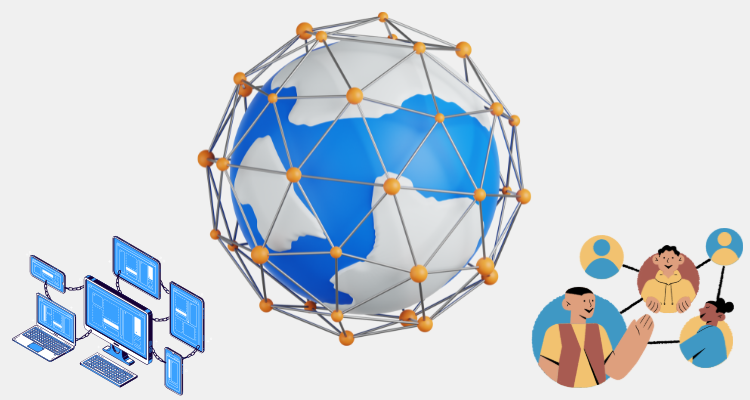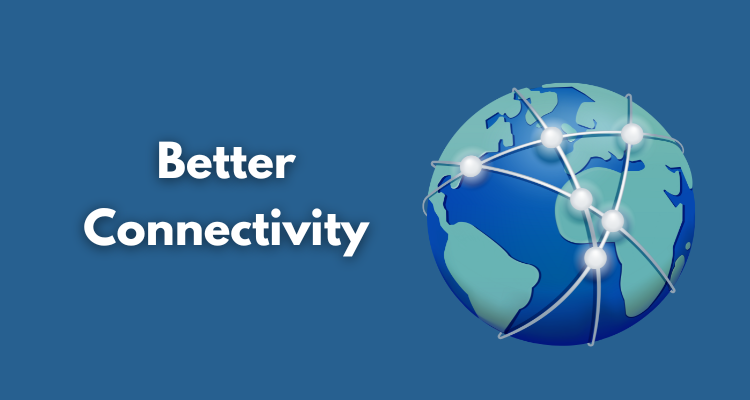Let’s be honest, nobody likes waiting for a website to load. If a page takes more than a few seconds, people start clicking away. In a world where everything is expected to work instantly, speed has become a key part of how we experience the internet.
But what makes a website fast? Design plays a role, sure. So does the server. But behind all of that, there’s one piece people often overlook — the actual connection delivering your content to the user. That’s where connectivity steps in.
Table of Contents
ToggleWhy Speed Matters More Than Ever

When someone visits your website, you’ve got just a few seconds to make a good impression. If your homepage loads quickly, people feel like things are working the way they should. Developing fast websites makes the visitor feel reliable, modern, and easy to use. On the flip side, a slow site can leave a bad impression even if the content is great.
Slow speeds frustrate users, lower engagement, and hurt conversions. In e-commerce, that means fewer sales. For publishers or service providers, that means fewer clicks and less trust.
And here’s the thing, people won’t wait. There are too many other options out there. That’s why solid, fast connectivity is critical.
What We Really Mean by “Connectivity”

When we talk about connectivity in this context, we’re not just talking about your internet plan or your Wi-Fi signal. We’re talking about the entire path data travels between your website and your users.
That includes the cables, the network infrastructure, the hosting environment, and how your site is delivered to different regions. Even a high-end website will feel slow if the network it runs on is unstable or underpowered.
Better connectivity helps close that gap. It cuts down on delays, reduces the chances of timeouts, and keeps everything running smoothly, especially when your audience is spread across different locations or using different devices.
Infrastructure Still Matters
Behind every fast-loading website is a system that’s been built to support performance. That includes hardware like routers, switches, and yes, the cabling.
Many companies still overlook this but the quality of your cabling can affect how well your internal network performs. If you’re managing websites or backend systems in-house choosing the right components makes a real difference. For example, Cat6 plenum cables from trusted manufacturers like Monk Cables are designed for speed and minimal interference. They’re a smart pick for data-heavy environments where performance can’t be compromised.
Upgrading your setup with quality components like these helps ensure that your connection is stable and capable of handling fast data transfers — which feeds directly into the speed and reliability your users see.
What About Mobile Users?
More than half of all web traffic now comes from mobile devices. And let’s face it, mobile connections aren’t always perfect. People browse while commuting, waiting in line, or sitting in coffee shops with shaky Wi-Fi. That means your website needs to be ready for unpredictable connections.
If your infrastructure is solid, you can still deliver a smooth experience, even if the user’s own connection isn’t ideal. That’s where strong backend connectivity gives you the edge. You reduce latency, avoid hiccups, and help users access your site no matter where they are or what device they’re using.
What You Can Do To Improve Connectivity
Improving site speed through better connectivity doesn’t mean you need to overhaul everything. It just means being smart about where and how your data moves.
Here are a few proven ways to improve your setup:
- Choose a quality host that’s known for speed and uptime. Not all hosting is created equal.
- Use a CDN (Content Delivery Network). It brings your content closer to the user by serving it from different global locations.
- Optimize your files, compress images, reduce large scripts, and keep things lean.
- Upgrade your internal network if your team works on-site. That means quality routers, proper switches, and using performance-grade cables.
- Stay mobile-friendly with responsive design and lightweight elements.
- Even a few of these steps can lead to big improvements in both site speed and user satisfaction.
Real Speed Builds Real Trust
At the end of the day, users don’t care about the tech behind your website, they just want it to work. When it loads quickly and runs without lag, it builds trust. It tells them you’re reliable, professional, and worth their time.
Slow-loading sites, on the other hand, feel frustrating. They signal a lack of attention to detail. And once someone leaves your site, the odds they’ll come back aren’t great.
Whether you’re running a small business site, an online store, or a content-heavy platform, fast and stable connectivity helps you deliver a better experience across the board.
Final Thoughts
Good website performance isn’t just about looks or clever features, it starts with a strong foundation. Solid connectivity is part of that foundation, and it’s something businesses need to take seriously.
By improving how your data moves from point A to point B whether that’s through hosting choices, physical cabling like Cat6 plenum cables, or smart optimization strategies, you give your users a faster, smoother experience.









